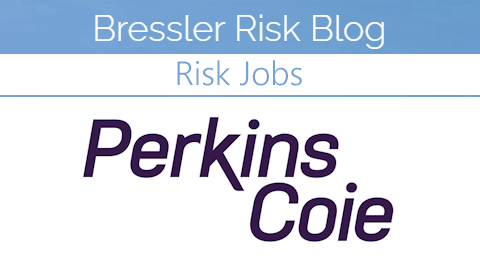The United States has long attracted global investors who aim to expand their business interests and establish a stable foundation for their families. The country’s economy, legal structure, and opportunities for innovation continue to draw attention from individuals seeking both financial growth and residency.
Foreign investors exploring pathways to live in the U.S. encounter several options, ranging from direct business ownership to government-approved investment programs. These pathways not only open doors to permanent residency but also offer a chance to integrate into the American economic fabric.
Understanding the requirements, benefits, and strategies behind these opportunities can make the journey smoother and more rewarding for those willing to invest capital and commitment in their pursuit of U.S. residency.
Understanding the EB-5 Program
One of the most recognized routes for foreign investors seeking residency is through the EB-5 Immigrant Investor Program. This pathway allows individuals to invest in U.S. enterprises that create employment for American workers.
The process begins by selecting a project that aligns with government regulations and personal investment goals. Within this context, understanding the EB-5 investment criteria becomes critical, as it defines eligibility, minimum capital requirements, and the type of business ventures that qualify. Meeting these criteria demands careful review of the project’s legitimacy, its capacity to generate at least ten full-time jobs, and adherence to financial transparency.
For many investors, this program represents a balance between entrepreneurial ambition and immigration opportunity, granting the potential for permanent residency upon successful completion of the project and job creation requirements.
Selecting the Right Investment Vehicle
Choosing an investment that aligns with immigration goals requires patience and strategic thinking. Investors must weigh the benefits of direct investment versus participation through regional centers.
Direct investments offer control over business operations and decision-making, appealing to those who prefer hands-on involvement. Regional center investments, by contrast, provide a more passive approach, where professionals manage the project on behalf of investors.
The decision depends on individual comfort levels, risk tolerance, and experience in business management. It is wise to study the project’s location, industry stability, and historical performance before committing funds.
Conducting detailed due diligence helps safeguard capital and promotes a better understanding of the potential return and long-term impact. This approach allows investors to align financial decisions with personal immigration goals while maintaining realistic expectations.

Legal Guidance and Regulatory Compliance
Foreign investors entering the U.S. market face a complex system of legal and immigration regulations. Partnering with qualified legal professionals can make the process more structured and reliable.
Attorneys who specialize in immigration and investment law assist in reviewing contracts, preparing documentation, and interpreting federal requirements. They can identify risks that may not be visible at first glance, particularly concerning source-of-funds documentation and compliance with anti-money laundering standards.
Following the correct legal framework prevents delays or denials in visa petitions. Investors must maintain transparency in financial transactions and prepare detailed evidence of how the investment capital was obtained.
Remaining compliant with both immigration and financial regulations strengthens the overall application and contributes to a smoother transition toward residency.
Financial Planning and Risk Management
Entering a new market always involves financial risk, and the U.S. investment environment is no exception. A well-structured financial plan serves as a foundation for success.
Investors should evaluate liquidity, long-term return potential, and exposure to economic shifts. Understanding market trends and identifying sectors with growth potential can minimize risk and enhance portfolio stability.
Working with financial advisors familiar with international taxation and cross-border investments can offer practical insights into how profits are taxed in both home and host countries. Planning for exchange rate fluctuations and potential delays in returns also helps create a more accurate financial forecast.
Strategic diversification of investments further protects capital and balances exposure between higher-risk ventures and more stable opportunities.
Evaluating Regional Centers and Job Creation Metrics
For those pursuing the EB-5 path through regional centers, it is crucial to evaluate each center’s track record and performance metrics. Regional centers act as intermediaries between investors and projects, channeling funds into ventures that meet the EB-5 program’s employment requirements.
Reviewing previous project completions, financial audits, and job creation outcomes provides valuable insight into a center’s reliability. A transparent regional center offers regular progress updates and comprehensive reporting on how jobs are calculated, whether through direct employment, indirect impact, or induced economic activity.
Understanding how these calculations are verified helps investors gauge whether the project is likely to meet the EB-5 job creation threshold. Scrutiny prevents unnecessary risk and contributes to a successful residency petition once the investment matures.
Long-Term Residency and Transition to Citizenship
Securing conditional permanent residency through an investor visa marks a significant achievement, but it is only the beginning of a long-term immigration journey. After two years, investors must demonstrate that their capital remained invested and that the project created the required number of jobs before applying to remove the conditions on their green card.
Once the conditions are lifted, the investor and qualifying family members become lawful permanent residents, gaining the right to live, work, and study anywhere in the United States. Maintaining permanent residency status involves meeting physical presence requirements and avoiding extended absences that may signal abandonment of residence.
Investors often use this period to strengthen business operations, expand investments, or explore new ventures within the country, all of which contribute to their integration into the economic and social fabric of the United States.
Over time, many investors pursue U.S. citizenship, which becomes an option after five years of permanent residency. The naturalization process includes demonstrating continuous residence, good moral character, and knowledge of U.S. history and government.
Preparing for this step involves more than completing legal formalities; it represents a deeper commitment to the country’s values and civic responsibilities. Investors who transition to citizenship gain the ability to vote, sponsor relatives for immigration, and travel with fewer restrictions.
The journey from investor to citizen reflects both personal ambition and economic contribution.
By maintaining compliance, engaging in community life, and supporting ongoing business activity, investors not only secure their place within the United States but also help strengthen its economy for future generations.
Foreign investors seeking U.S. residency through investment have access to structured programs that balance opportunity with responsibility. The EB-5 route stands out as a well-established option for those ready to contribute to the American economy through job creation and capital investment.
By combining legal expertise, thoughtful financial planning, and careful selection of projects or regional centers, investors can navigate this process with confidence. Success requires attention to compliance, transparency, and ongoing engagement with both the business and immigration aspects of the investment.
For those prepared to meet these challenges, the rewards extend beyond financial growth to include the promise of a secure and prosperous future in the United States.
Questions about our small business coaching services? Connect with our business coach now.











